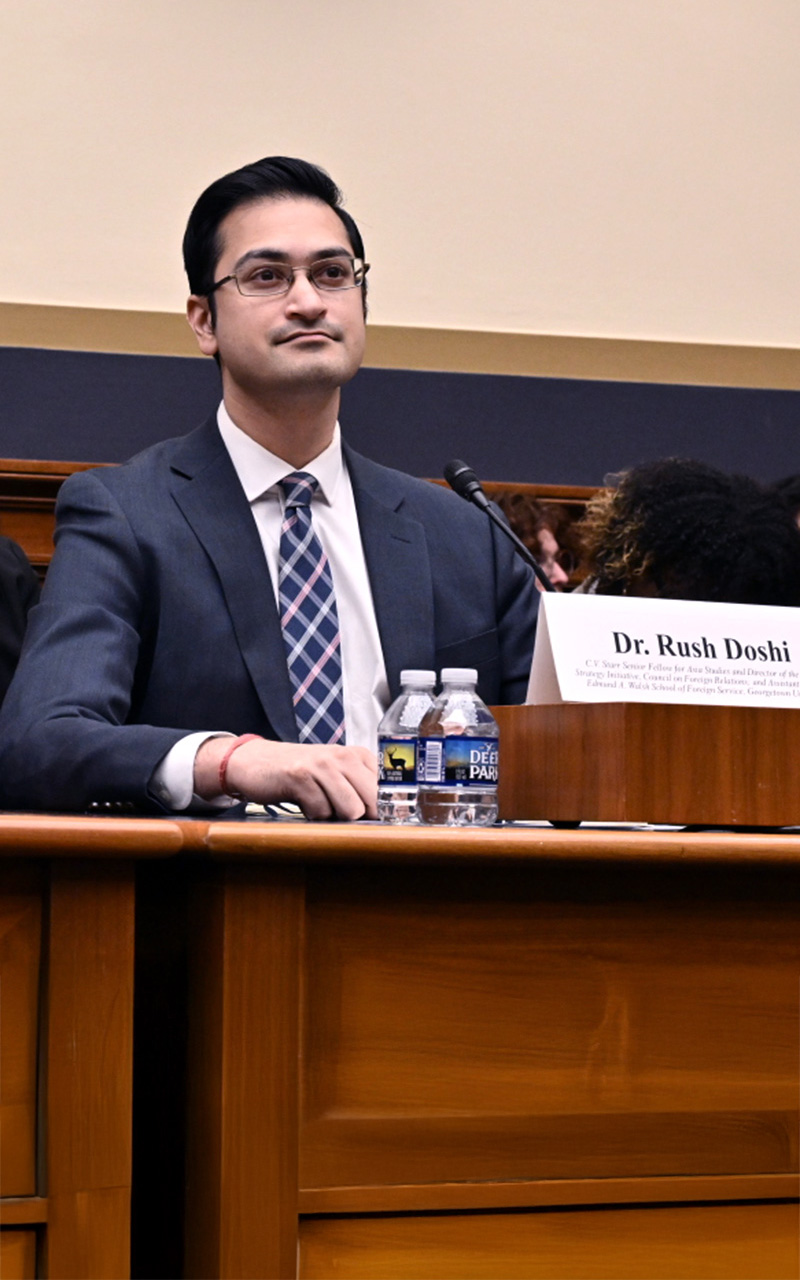Four questions framed Dr. Rush Doshi’s remarks to the U.S. House Committee on Financial Services:
- What are Beijing’s ambitions?
- What is Beijing’s strategy to achieve its ambitions?
- Is the strategy working?
- What should Washington do?
More on:
The PRC has a grand strategy to displace U.S.-led order: to “catch up and surpass” the U.S. technologically; to reduce dependence on others while increasing their dependence on China economically; and to acquire the capability to defeat U.S. forces militarily. Beijing believes the next industrial revolution is upon us—AI, quantum, smart manufacturing, biotechnology—and aims to win it.
China’s strategy includes three parts: (1) acquire technology by buying foreign companies, forcing firms to transfer it in exchange for market access, or steal it; (2) protect Beijing’s companies through tariffs, non-tariff barriers, and exchange rate manipulation; and (3) use subsidies, tax breaks, R&D support, cheap credit, state investment and other tools of industrial policy to undercut rivals of China's companies. Conservative estimates value PRC intellectual property theft at more than $1 trillion. This $400-billion-per-year strategy allows PRC companies to stay solvent longer than competitors that don’t enjoy state backing.
And the strategy is working. Since China has joined the WTO, the U.S. share of global manufacturing fell by roughly half while China’s share quintupled from 6% to 30%. Beijing can leverage this incredible manufacturing dominance to gain military advantage and innovate. China is at the leading edge in robotics, AI, and quantum computing. It leads the U.S. in high-impact scientific papers and patents. And it accounts for half of all industrial robot installations worldwide, 60% of global EV production, 75% of global battery production, and 90% of solar panel, rare earth, and antibiotic production. In the military domain, the PRC has two hundred times more shipbuilding capacity than the US and is leading in new technologies like hypersonics. As Beijing’s economy slows and its population ages, it is pouring money into industry and exports to fund growth and to reduce reliance on its dwindling supply of cheap labor.
To counter the PRC, the United States needs to work with others. The U.S., combined with its partners and allies, has three-times China’s GDP, half of all global manufacturing, more than twice China’s likely military spending, twice China’s patents and top-cited publications, and massive market power. Together, we can weather the “second China shock,” reindustrialize, and lead in technology. The U.S. also needs new institutions, such a federal industrial investment bank that can make long-term loans, take equity in strategic industries, coordinate with private capital, and fund reshoring from China to the U.S. or allied countries. Washington also needs to change private sector incentives and consider tax policies to encourage shareholders to hold equity positions for longer. The U.S. would also benefit from sustained or increased levels of basic science research funding. Finally, the U.S. needs to play defense. To maintain its technological lead, Washington requires stronger export controls, research protection, and regulation of inbound and outbound investment.
The U.S. has never faced an adversary as formidable technologically as China; but it has everything necessary to succeed. Washington just has to make the right choices.
More on:
 Online Store
Online Store
